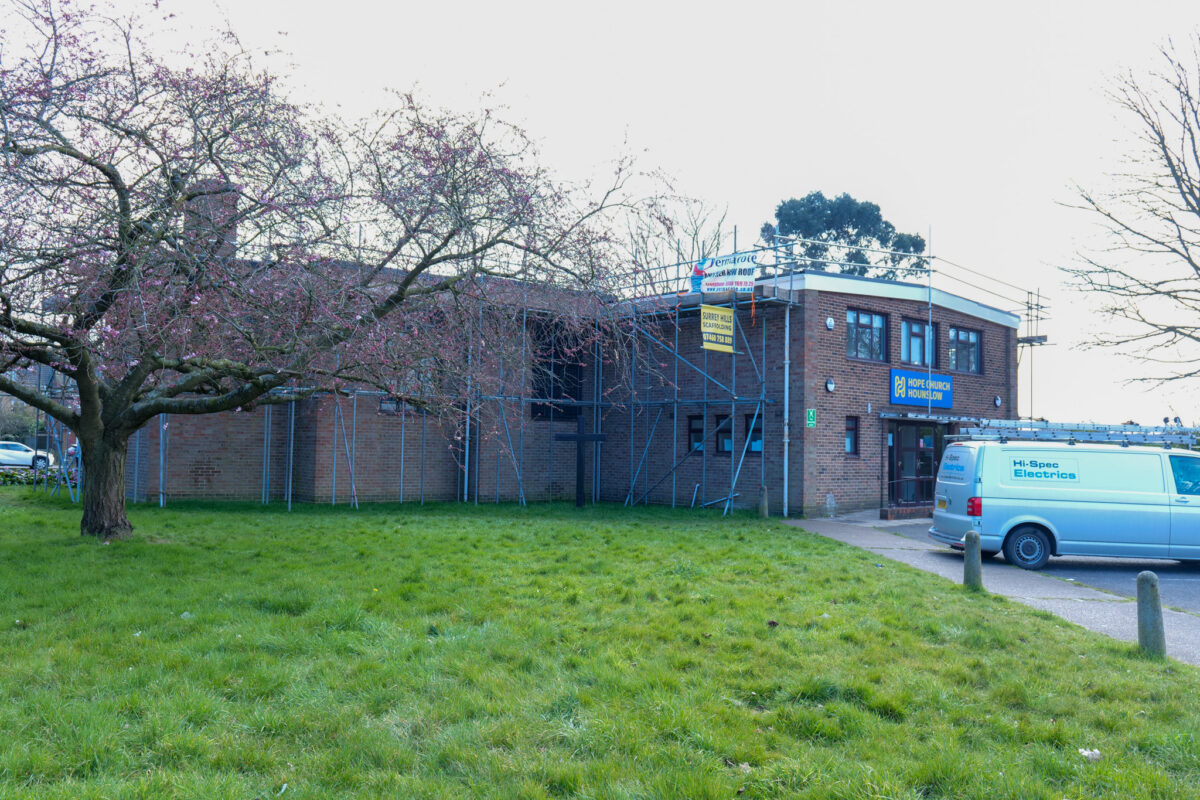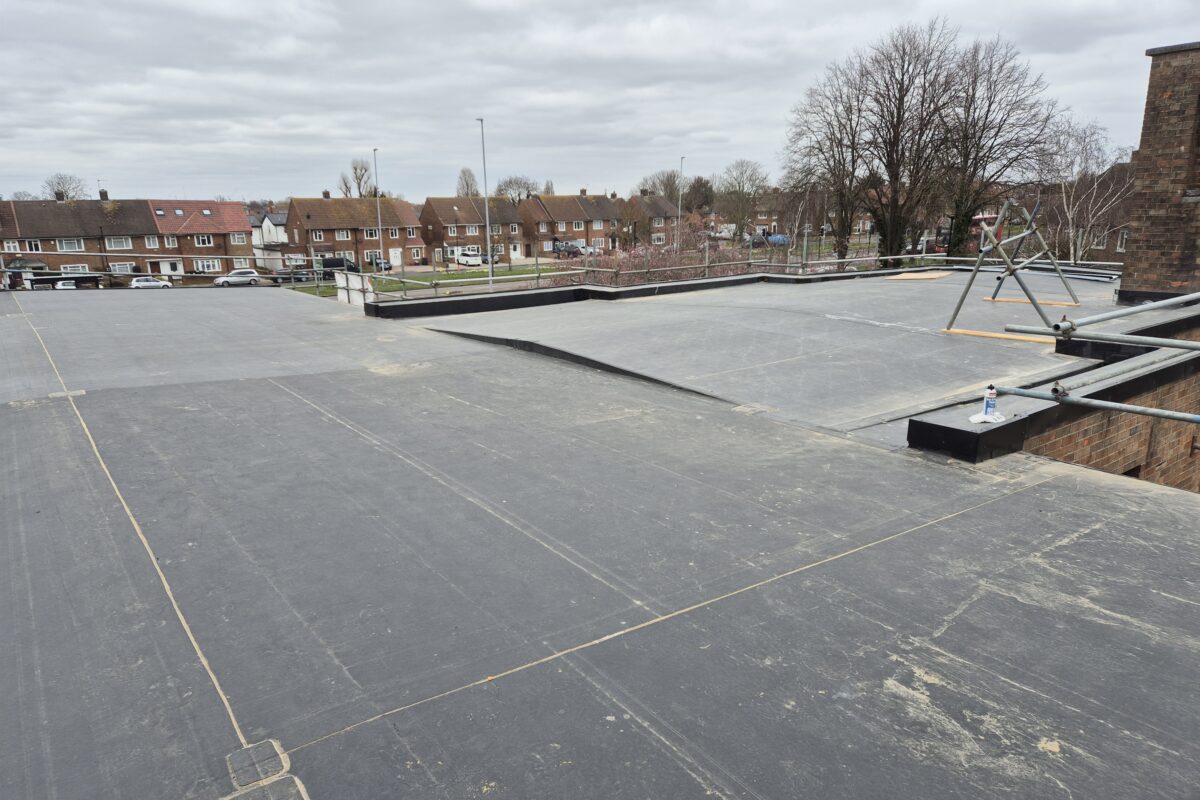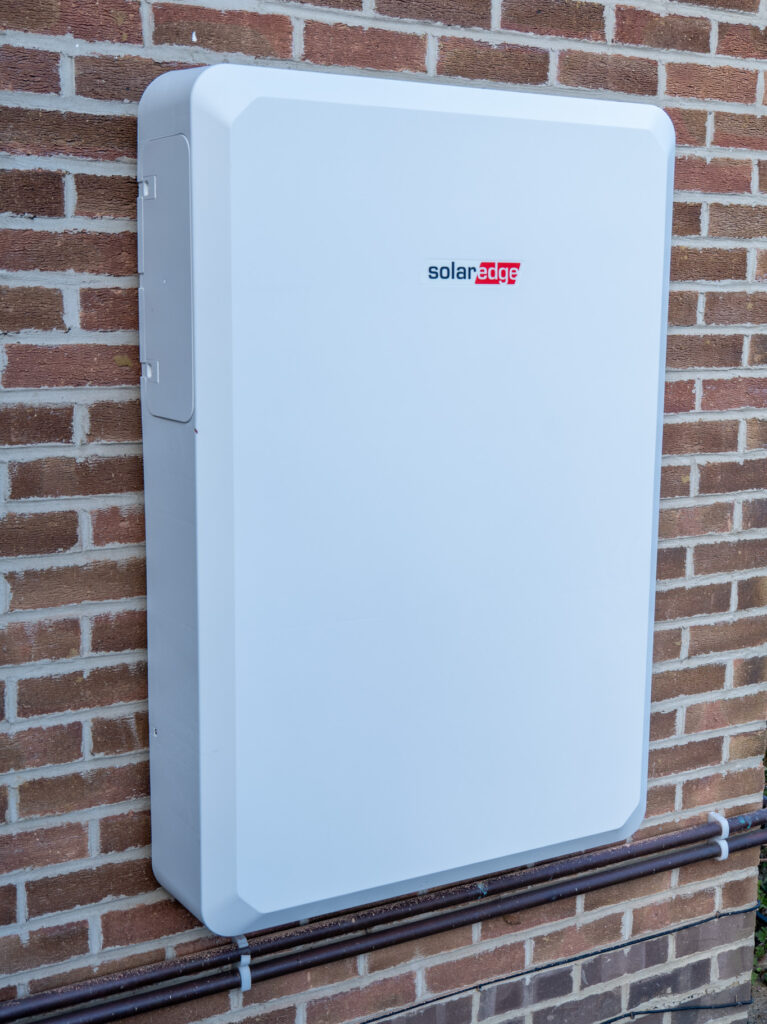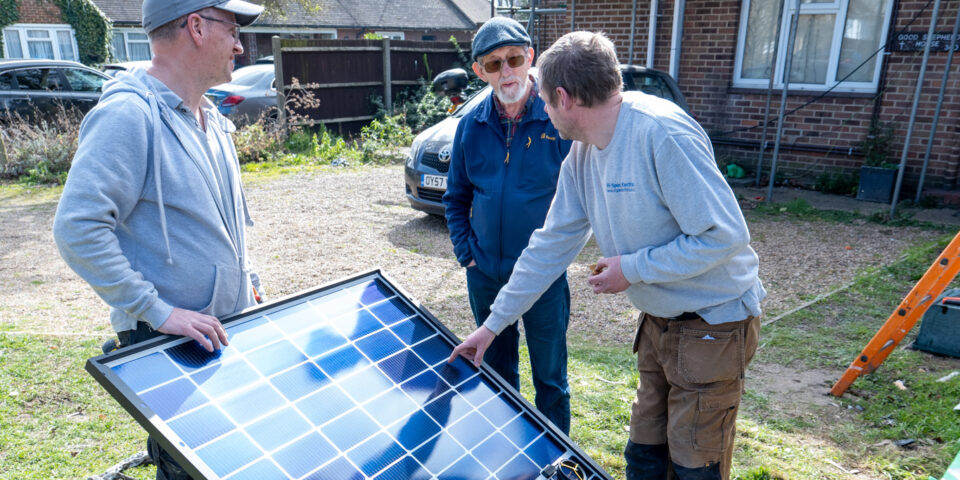Hope Church Hounslow is a vibrant Christian community close to Heathrow Airport in NW London. Based across two sites – St Paul’s and the Good Shepherd – Hope church expresses the love of Christ by seeking to meet the spiritual, practical, emotional and social needs of their local community through a myriad of projects.
Hope church are now demonstrating their care for God’s creation through a significant refurbishment project on their 1956 Good Shepherd church building.



Good Shepherd houses a church hall and vicarage under one large flat roof.
That roof was leaking and in desperate need of repair and the church was successful in applying for a government Voluntary Community and Social Enterprise (VSCE) Energy Efficiency grant, which has been an absolute godsend.
The result is a completely new, insulated roof covering for the church and vicarage, 38 solar panels, LED lighting and smart building management that will radically reduce the building’s carbon footprint, increase energy efficiency and reduce costs.

The project has been completed within 9 months but has not been without its challenges.
Graham Neilsen was one of the original church-planting group who came from St Stephen’s Twickenham 14 years ago to revitalise St Paul’s, Hounslow and bring about the creation – with the Good Shepherd church – of Hope Church. For all those 14 years he has been buildings manager and has overseen the recent project.
He explains how the process of proving eligibility and applying for the VSCE grant began last June and required the church to explain the community activities that they host/hold. The effort proved worthwhile when, in November, the grant for the church of £133K– covering insulation, solar power, and LED lights – was approved.
The first week of January saw a flurry of activity with planning permission granted and contractors appointed for the warm roof and solar panels. Only for the roofers to pull out within days having under-budgeted for the work!
The church approached a new contractor – Permacote – who priced beyond budget but then agreed a 14% reduction and then another £2k off to enable the church to move forward with the works.
Good relationships have been at the heart of this project. As part of their clergy housing improvement programme, the diocese were able to contribute to roof insulation and solar panels for the vicarage part of the building. All the works were completed at the end of March – a condition of the VSCE grant.
The 38 solar panels harness power stored in two 10kw batteries providing energy for church and vicarage respectively. With LED lighting and smart management, costs are kept to a minimum.



On the day I visit, under cloudless blue skies and bright sunshine, Kevin and James from Hi-Spec Electrics are installing the remaining panels and are enthusiastic about churches going down the solar route. The price of panels and batteries have come down significantly in recent years. It’s not as expensive as you think.
And once installed solar panels immediately start making money. The panels on the Good Shepherd are already generating more power than the church needs and they will shortly begin selling power to the national grid. It’s projected that the project will pay for itself within 5-6 years. Since the works were completely grant funded, this is profit for the church to plough back into its community projects.

| AT A GLANCE |
| What was done? |
|
| Reasons for action? |
|
| Costs |
CHURCH
VICARAGE
PROJECT MANAGEMENT
|
| Funding |
CHURCH
VICARAGE
|
| Length of time |
| 9 months |
| Impact |
|
| Lessons learnt |
|
